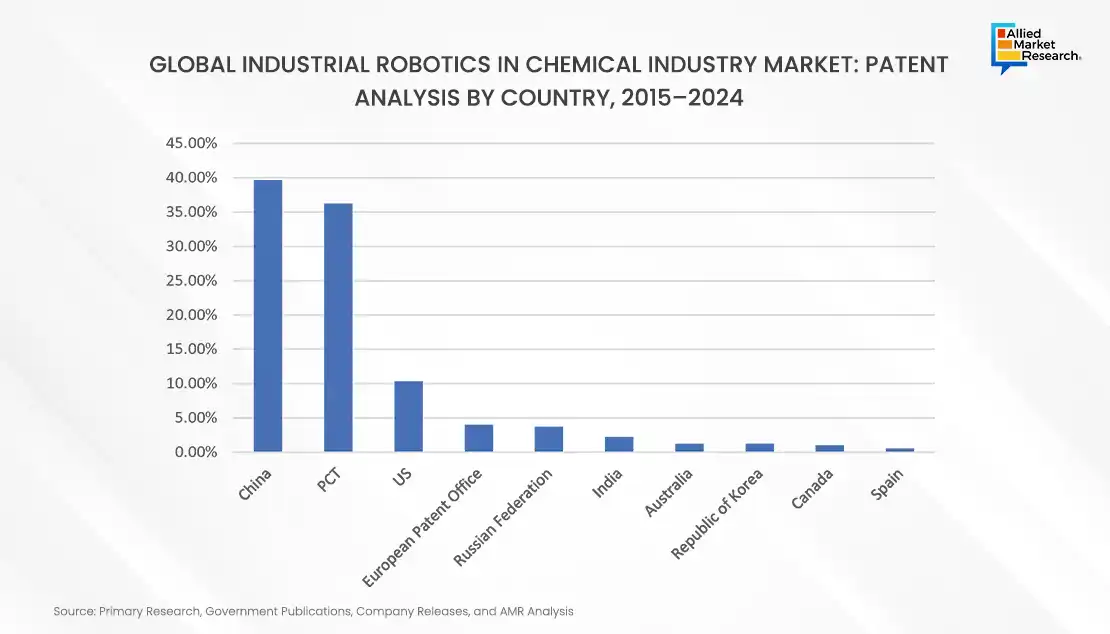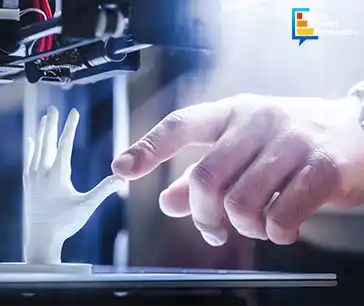Table Of Contents
- Industrial robotics
- Meeting the Rising Demand in Manufacturing
- Automation Improving Product Standards
- Delivering Production Efficiency
- 3D printing
- Wide Application Scope of 3D Printing
- Enabling Creation of Intricate Designs
- Meeting Sustainability Goals
- Blockchain
- Surge in Demand for Data Security and Integrity
- A Promising Future

Yerukola Eswara Prasad

Pooja Parvatkar
The Chemical Industry: Trends and Technologies

The chemical industry has always been under constant innovation, which has led to the launch of several products catering to various end-use industries. Sub-fields in the chemical industry have witnessed various strategic developments in 2023.
Industrial robotics
Industrial robotics make it easy to automate inspection, dosing, mixing, filling, and packaging. It supports employees, relieves them of tedious and repetitive work, and delivers a substantial increase in efficiency. It helps with lab testing, analysis, injection molding tasks, and other applications. Robots provide higher efficiency while keeping employees away from numerous hazardous tasks. The industrial robotics market is projected to reach $163 billion by 2032, growing at a CAGR of 12.6% from 2023 to 2032.
Meeting the Rising Demand in Manufacturing
In recent years, the chemical industry has been employing newly ordered industrial robots, owing to its considerably larger production scale and fast-growing demand. There is rising adoption of robotics by manufacturers to meet industry demands and gain a competitive edge over other players in the market. Furthermore, the concept of smart factories has gained importance over the years, with some companies inclining towards the adoption of robotics systems. Chemical manufacturing often involves hazardous materials and processes. Industrial robots can be deployed in environments that are dangerous for human workers, reducing the risk of accidents and exposure to toxic substances.
Automation Improving Product Standards
Moreover, robotics in the chemical industry can automate various manufacturing processes, leading to increased precision and consistency. Automated systems can handle repetitive and labor-intensive tasks, allowing human workers to focus on more complex and strategic aspects of production. Also, robots equipped with advanced sensors and vision systems can perform precise and reliable quality control checks. This ensures that chemical products meet stringent quality standards, reducing defects and improving overall product quality.
Delivering Production Efficiency
Furthermore, industrial robots can operate 24/7 without the need for breaks or shifts, leading to increased production efficiency. They can handle tasks at a faster pace than manual labor, resulting in higher productivity levels for chemical manufacturing processes. In addition, robots are employed for material handling tasks, such as loading and unloading raw materials, transporting goods within the facility, and managing inventory. This enhances the overall logistics and supply chain management in the chemical industry.
3D printing
3D printing is the process of fabricating a 3D object from computer-aided design data. It is an innovative technology, that has been growing and its implementation in the chemical industry has grown due to declining cost of the printers in the chemical industry due to cheaper raw materials and faster printing speeds and capacity to produce complex geometries. The global 3d printing market is projected to reach $94.0 billion by 2030, growing at a CAGR of 22.1% from 2021 to 2030.

Wide Application Scope of 3D Printing
In the chemical industry, 3D printing is employed for research and development, maintenance, manufacturing, and processes. It enables acceleration of design cycles, streamlining of processes, quicker operations, and faster takeoff to the market (TTM). Using a 3D printer, lab equipment can be printed economically, such as custom-designed laboratory containers, which test chemical reactions. Also, 3D printing facilitates economic fabrication, mass production, rapid prototyping, and smooth operation.

Enabling Creation of Intricate Designs
The chemical industry often requires highly customized and complex components, such as reactors, heat exchangers, and sensors. 3D printing allows for the creation of intricate designs that are challenging or impossible to achieve with traditional manufacturing methods, driving demand for this technology. 3D printing enables rapid prototyping, allowing researchers and engineers in the chemical industry to quickly test and iterate designs. This accelerates the product development cycle, reduces time to market, and facilitates the exploration of innovative solutions without the need for expensive tooling.
Meeting Sustainability Goals
Traditional manufacturing methods often involve subtractive processes, leading to significant material waste. 3D printing, as an additive process, minimizes material waste by building up structures layer by layer. This aligns with sustainability goals and is particularly relevant in the chemical industry, where certain materials may be expensive or hazardous. The chemical industry often deals with specialty chemicals and materials required in small quantities or for niche applications. 3D printing supports on-demand and small-batch production, allowing companies to produce components as needed without the constraints of large-scale manufacturing runs.
Blockchain
Blockchain technology is used to improve supply chain management in the chemical industry. Blockchain can improve transparency and traceability by creating a shared, decentralized ledger of all supply chain transactions and activities which can help reduce the risk of fraud, counterfeiting, and other supply chain issues. Blockchain technology can be used to improve quality control in the chemical industry. Blockchain can help to verify products?satisfy quality standards by generating a permanent and tamper-proof record of all quality control data.?
Surge in Demand for Data Security and Integrity
Blockchain technology can be utilized to protect intellectual property by creating a secure and tamper-proof record of all intellectual property rights. It can help prevent the unauthorized use of patented or copyrighted materials. This can help encourage innovation and protect the investments of chemical companies. Blockchain also helps to prevent the unauthorized use of patented or copyrighted materials by creating a secure and tamper-proof record of all intellectual property rights.?

Blockchain technology can be used to create decentralized marketplaces for buying and selling chemical products by eliminating the need for intermediaries. It can aid in the reduction of transaction costs and the enhancement of transparency. which?can contribute to a more efficient and competitive chemical product market. The Financial Action Task Force (FATF) has issued guidance on the use of blockchain for anti-money laundering and counter-terrorism financing purposes. Thus, the increase in demand for blockchain is expected to boost the growth of the chemical technology market during the forecast period.?
A Promising Future
The future of industrial robotics is marked by heightened efficiency, adaptability, and integration with emerging technologies. Collaborative robots, or cobots, will become increasingly prevalent, working alongside humans seamlessly. Miniaturization and modular designs will facilitate flexible deployment across various industries, while enhanced sensor technology will enable robots to perceive and interact with their surroundings more effectively. Moreover, the integration of robotics with IoT and cloud computing will enable real-time monitoring and remote operation, ushering in an era of interconnected smart factories. Stay ahead of the competition by leveraging AMR’s capabilities in mapping trends and strategies of the future for a successful business venture. Get in touch with us.

